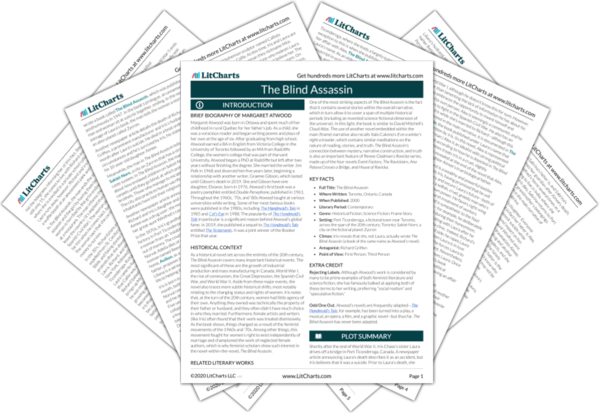Next
Summary
The Blind Assassin Study Guide |
Next
Summary
|
Welcome to the LitCharts study guide on Margaret Atwood's The Blind Assassin. Created by the original team behind SparkNotes, LitCharts are the world's best literature guides.

Rejecting Labels. Although Atwood’s work is considered by many to be prime examples of both feminist literature and science fiction, she has famously balked at applying both of these terms to her writing, preferring “social realism” and “speculative fiction.”
Odd One Out. Atwood’s novels are frequently adapted—The Handmaid’s Tale, for example, has been turned into a play, a musical, an opera, a film, and a graphic novel—but thus far, The Blind Assassin has never been adapted.